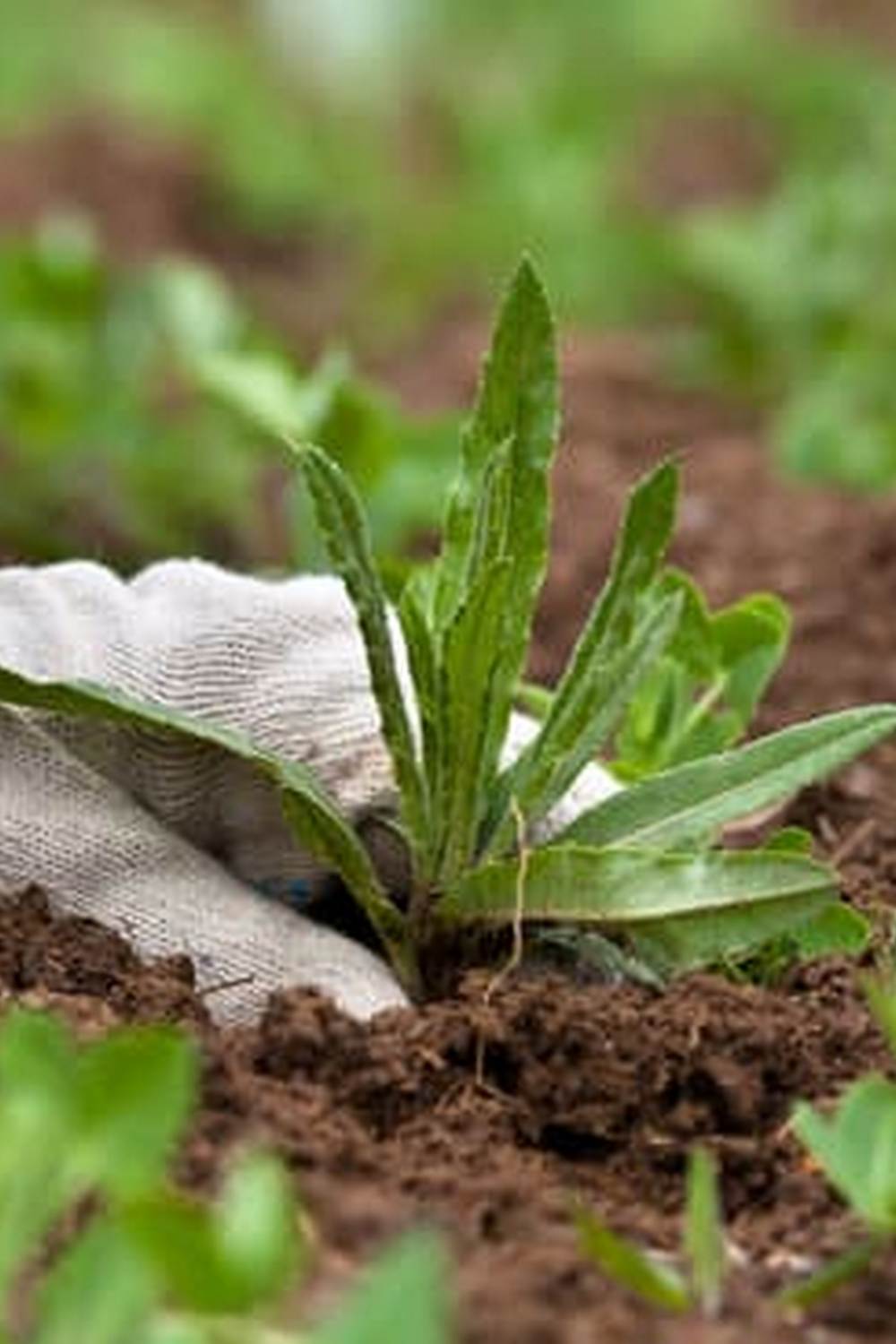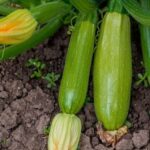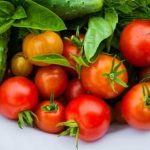Container vegetable gardening is a great option for those who want to grow their own produce but have limited space or poor soil quality. In this article, we will explore everything you need to know about container vegetable gardening, from choosing the right containers and vegetables to dealing with pests and diseases. Whether you’re a beginner or an experienced gardener, these tips and tricks will help you create a thriving container garden.
When it comes to container vegetable gardening, there are several key factors to consider for success. From selecting the best vegetables for containers to understanding companion planting techniques, we will cover all the essentials to help you get started on the right foot. With the right knowledge and tools, you can create a bountiful and beautiful container garden in any space.
In addition to providing practical advice on soil, watering, fertilizing, pest control, and harvesting, we will also introduce creative ideas for designing and arranging your container vegetable garden spaces. By the end of this article, you will be equipped with the knowledge and inspiration needed to embark on a rewarding journey of container vegetable gardening. So let’s dive in and discover how you can grow your own fresh produce right at home.
Choosing the Right Containers for Your Vegetable Garden
When it comes to container vegetable gardening, choosing the right containers is crucial for the success of your garden. The type of containers you use can directly impact the growth and health of your vegetables. Here are some factors to consider when selecting containers for your vegetable garden:
- Material: Consider the material of the container. Options include plastic, ceramic, terracotta, wood, or fabric. Each material has its pros and cons in terms of durability, insulation, and water retention.
- Size: The size of the container is important and will depend on the specific vegetable you plan to grow. Some vegetables require deeper containers for their roots to spread out, while others can thrive in shallow pots.
- Drainage: Proper drainage is essential for container gardening. Make sure that your chosen containers have adequate drainage holes to prevent waterlogged soil, which can lead to root rot.
In addition to these considerations, it’s also important to think about the aesthetic aspects of your containers. Consider how they will look in your garden space and whether they complement the overall design.
Ultimately, choosing the right containers for your vegetable garden requires thoughtful consideration of both functional and aesthetic factors. By carefully selecting containers that meet the needs of your vegetables while also enhancing the beauty of your garden space, you can set yourself up for a successful and enjoyable container vegetable gardening experience.
Selecting the Best Vegetables for Container Gardening
When it comes to selecting the best vegetables for container gardening, there are a few factors to consider. Not all vegetables thrive in containers, so it’s important to choose varieties that are well-suited for this type of gardening. Here are some popular vegetables that are known to do well in containers:
- Tomatoes: Compact and dwarf varieties of tomatoes are ideal for containers. Look for determinate types that don’t require staking and have a bushy growth habit.
- Peppers: Both sweet and hot peppers can be successfully grown in containers. Choose smaller varieties that are more manageable in a limited space.
- Leafy Greens: Vegetables like lettuce, spinach, and kale are perfect for container gardening. They have shallow roots and can be easily grown in small pots.
In addition to these popular choices, other vegetables that fare well in containers include cucumbers, eggplants, radishes, and carrots. When planning your container garden, be mindful of the space each vegetable will need to grow properly. It’s also important to consider the potential height of the plants when selecting your containers.
Remember that proper spacing between plants is crucial for their growth and productivity. Making sure you have enough room for each vegetable is essential to prevent overcrowding which can lead to competition for nutrients and water.
Creative Ideas for Designing and Arranging Your Container Vegetable Garden Spaces
If you want an appealing arrangement for your container vegetable garden, there are plenty of creative ideas you can explore to make the most out of your available space.
- Vertical Gardening: Utilize trellises or stakes to support climbing plants like beans or cucumbers. This not only saves space but also adds visual interest to your garden.
- Hanging Gardens: Hang baskets or pots from a railing or overhead structure to grow trailing plants such as cherry tomatoes or strawberries.
- Mixing Flowers and Vegetables: Combine edible plants with colorful flowers in your containers for an attractive display that also attracts beneficial insects.
These design ideas not only make efficient use of limited space but also add aesthetic appeal to your container vegetable garden. With a little creativity, you can turn even the smallest outdoor area into a thriving and beautiful vegetable paradise.
Companion Planting
Understanding Companion Planting
Companion planting is based on the concept that certain plants can help each other grow when grown in close proximity. Some plants may repel pests that are harmful to their companion plants, while others may improve soil quality or provide structural support. By understanding which vegetables work well together, you can create a more harmonious and productive container garden.
Common Companion Planting Combinations
Some common examples of companion planting in container vegetable gardening include pairing tomatoes with basil or marigolds to deter pests, and interplanting onions or garlic with carrots to repel carrot flies. Additionally, planting tall-growing crops like corn or trellised peas alongside lower-growing vegetables such as lettuce or spinach can utilize vertical space efficiently.
Experimenting With Combinations
As you plan your container vegetable garden, consider experimenting with different companion planting combinations to see what works best for your specific growing conditions and the types of vegetables you want to grow. Keep in mind that not all companion planting combinations work for every gardener, so it’s important to observe how your plants interact and adjust your layout as needed.
With thoughtful planning and careful observation, you can harness the benefits of companion planting in your container vegetable garden for maximum growth and overall plant health.
Tips for Soil, Watering, and Fertilizing Your Container Vegetable Garden
When it comes to container vegetable gardening, proper soil, watering, and fertilizing are crucial for the success of your plants. Using the right type of soil is essential for providing your vegetables with the nutrients they need to thrive. Look for a high-quality potting mix that is well-draining and enriched with organic matter. Avoid using garden soil as it can become compacted in containers and hinder root growth.
In terms of watering, container vegetables generally require more frequent watering than those grown in the ground. The smaller space and higher exposure to sunlight can cause the soil to dry out quickly. It’s important to check the moisture level regularly and water when the top inch of soil feels dry. Additionally, be mindful of overwatering as it can lead to root rot and other issues. Consider using a moisture meter to accurately gauge when your plants need water.
Fertilizing container-grown vegetables is also necessary for promoting healthy growth and abundant harvests. Because nutrients can wash away more quickly from containers, regular feeding is important. Choose a balanced fertilizer that is suitable for vegetables and follow the instructions on the packaging for application frequency. Organic options such as compost tea or fish emulsion can also be beneficial for providing a natural source of nutrients to your plants.
| Aspect | Description |
|---|---|
| Soil | Use high-quality potting mix with good drainage |
| Watering | Check moisture regularly and water when top inch feels dry; avoid overwatering |
| Fertilizing | Choose a balanced fertilizer suitable for vegetables and follow instructions for application frequency; consider organic options like compost tea or fish emulsion |
Dealing With Pests and Diseases in Container Gardening
Pests and diseases can pose a threat to any garden, including container vegetable gardens. One of the advantages of container gardening is that it can help minimize the risk of certain pests and diseases, but it’s still important to be proactive in preventing and addressing any issues that may arise.
Regularly inspect your plants for signs of pests or diseases, such as yellowing leaves, holes in the foliage, or discoloration. If you notice any issues, take action immediately to prevent them from spreading.
To prevent pests and diseases in your container vegetable garden, consider using natural pest control methods, such as introducing beneficial insects like ladybugs or lacewings that feed on common garden pests. You can also use insecticidal soaps or neem oil to treat common pests like aphids or spider mites. Additionally, practicing good hygiene by regularly removing dead plant material and maintaining proper air circulation can help prevent the spread of diseases.
In some cases, despite preventative measures, your container vegetable garden may still fall victim to pests or diseases. In these situations, it’s important to act quickly to address the issue before it becomes widespread.
Consider isolating affected plants to prevent the issue from spreading to healthy ones and consult with a local gardening expert or nursery for advice on how best to treat specific pests or diseases without harming your vegetables. By staying vigilant and taking proactive measures, you can help keep your container vegetable garden healthy and thriving throughout the growing season.
Harvesting and Caring for Your Container-Grown Vegetables
Once your vegetables have reached maturity, it’s time to harvest them. Be sure to regularly check for ripe produce, as leaving vegetables on the plant too long can lead to overripeness and a decrease in flavor.
Different vegetables have different harvesting techniques, so be sure to research the specific needs of each vegetable in your container garden. For example, tomatoes are best harvested when they are fully colored but still firm, while lettuce should be picked when the outer leaves are large enough to eat.
Caring for Your Container-Grown Vegetables
After harvesting your vegetables, it’s important to continue caring for your plants to ensure a continuous harvest. This may include removing any dead or dying leaves, checking for signs of pests or diseases, and providing proper watering and fertilization.
As your vegetables continue to grow, you may need to provide support for taller plants such as tomatoes or peppers with stakes or trellises. Additionally, regular pruning and shaping of your plants will help maintain their overall health and productivity.
Extend Your Harvest With Succession Planting
To extend your harvest season and make the most of your container garden space, consider succession planting. This involves planting new crops as soon as old ones are harvested. This way, you can continuously have fresh vegetables throughout the growing season.
With proper care and attention, your container-grown vegetables can provide a bountiful harvest that will reward you with fresh and delicious produce all season long.
Creative Ideas for Designing and Arranging Your Container Vegetable Garden Spaces
In conclusion, container vegetable gardening can be a rewarding and practical way to grow your own produce, even in limited outdoor spaces. By utilizing the right containers, selecting the best vegetables for your specific needs, and considering companion planting strategies, you can maximize the growth and health of your plants. With proper care in terms of soil, watering, fertilizing, and pest management, your container vegetable garden can flourish and provide you with a bountiful harvest.
When it comes to designing and arranging your container vegetable garden spaces, the possibilities are endless. You can get creative with different sized containers, mix and match vegetables for visual interest, or even incorporate vertical gardening elements for added space efficiency. In addition to being functional, your container garden can also be aesthetically pleasing, adding beauty to your outdoor living area.
Whether you have a small balcony or a spacious patio, there are numerous innovative ideas for creating a unique and productive container vegetable garden. From using repurposed items as planters to incorporating colorful flowers for added appeal, there are endless possibilities for customizing your container vegetable garden spaces according to your personal style and preferences. With a little imagination and the right resources at hand, you can enjoy the benefits of homegrown vegetables in a visually stunning setting.
Frequently Asked Questions
What Vegetables Grow Well Together in a Container?
Some vegetables that grow well together in a container include tomatoes and basil, carrots and lettuce, and peppers and spinach. These combinations can benefit from each other’s growth habits and help maximize space.
Does Companion Planting Work for Container Gardening?
Companion planting can definitely work for container gardening. Pairing compatible vegetables together can help deter pests, attract beneficial insects, and improve overall plant health. It’s important to consider each plant’s needs when planning the layout of your container garden.
What Vegetables Can Be Planted in the Same Box?
Vegetables that can be planted in the same box include those with similar sunlight, water, and soil requirements. For example, you can plant radishes with leafy greens like lettuce or spinach since they have similar watering schedules and nutrient needs. It’s all about finding harmonious combinations that support each other’s growth.

If you’re looking to get into vegetable gardening, or are just looking for some tips on how to make your current garden better, then you’ve come to the right place! My name is Ethel and I have been gardening for years. In this blog, I’m going to share with you some of my best tips on how to create a successful vegetable garden.





